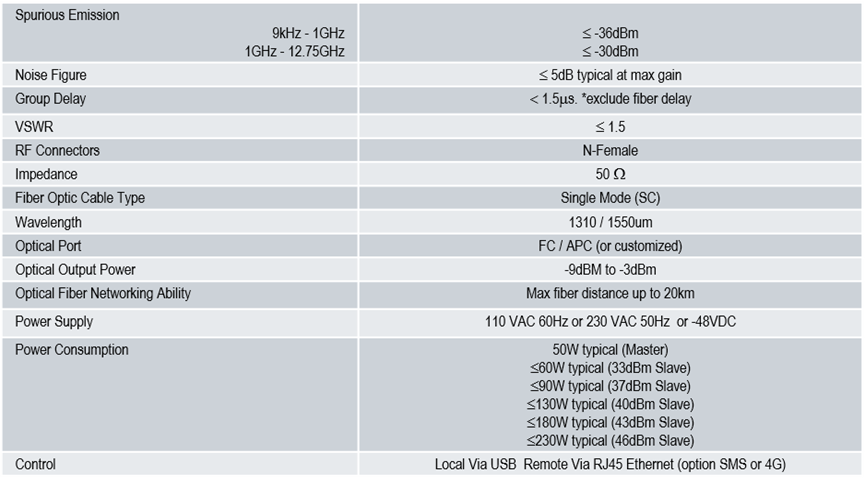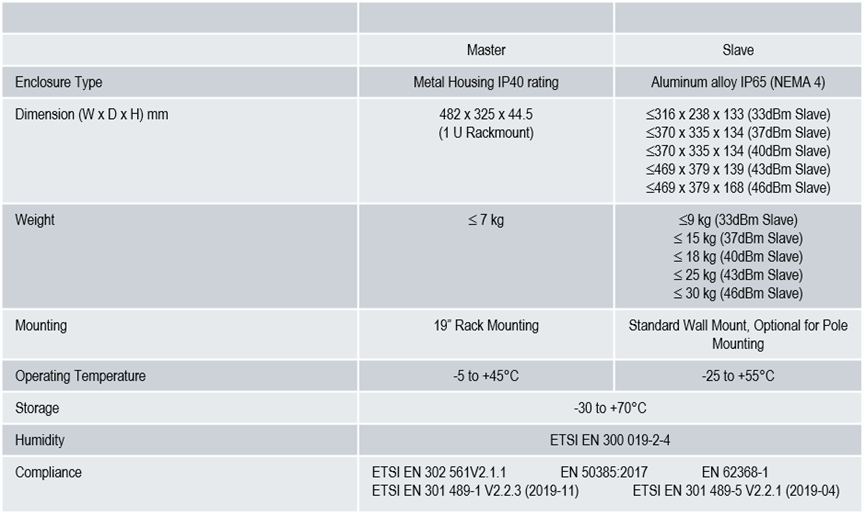Fiber Optical BDA
Fiber Optical BDA consists of two modules, Master and Slave.Master module can be used directly coupled from BTS(Cable-Access FOR) or can be connected to a donor antenna receiving signals from the BTS(Wireless-Access FOR),while Slave module provides service area with system coverage. Typical applications of this line of BDAs are indoor situations such as tunnels, buildings, subways, and outdoor scenarios such as stadiums, rural areas and dense urban areas.
Classification:
Key words:
Complete Equipment Series
Active Module Series
Passive Device Series
Antenna Series
Product Description
Overview:
Introducing the Fiber Optical BDA Series from L-TEL, designed to provide bidirectional communication between terminals and base stations across various environments, including tunnels, buildings, subways, as well as outdoor areas such as stadiums, rural, and dense urban areas. Boasting excellent compatibility, the Fiber Optical BDA series is widely utilized in trunking communication systems like TETRA, DMR, and APCO25, as well as conventional communication systems. These BDA enhance the coverage and performance of two-way radio systems, ensuring reliable communication with advanced technology and robust construction. The series BDA provides exceptional signal clarity and extended range, making it the perfect solution for professional and industrial communication needs.
Key Features:
Auto Diagnostics
The BDA is equipped with a microprocessor module that monitors the operational parameters of the unit. This self-check capability provides immediate alarm notifications in case of failure, indicated via local LEDs. The microprocessor module continuously verifies the status of amplifiers, PA (Power Amplifier), power supply, intermediate filters, battery backup, and temperature levels.
Control
The BDA can be managed locally through the control panel or via USB. It also offers remote control options through the OMS (Operation and Maintenance Software) using wireless connections (SMS or 4G) or Ethernet RJ45 wire connections. In both local and remote settings, parameters such as UL (uplink) gain, DL (downlink) gain, RF (radio frequency) ON/OFF, and intermediate filter characteristics can be adjusted. Additionally, the status of alarms, amplifiers, PA, power supply, battery backup, and temperature can be monitored.
Benefits:
Improved Communication Clarity:
Ensures clear and uninterrupted communication, essential for effective coordination and operations.
Enhanced Coverage:
Extends the range of two-way radio systems, providing reliable communication across larger areas.
Operational Flexibility:
Offers various models to meet different operational requirements and environments, ensuring adaptable solutions.
Long-Term Reliability:
Durable design and construction reduce the need for frequent replacements and maintenance, lowering overall costs.
Cost-Effective:
Provides excellent value by enhancing system performance and reducing operational disruptions.
Seamless Integration:
Compatible with existing systems, allowing for easy upgrades and expansions without major overhauls.
Technical Specification


Product Type:
Cable-Access FOR BDA, Wireless-Access FOR BDA, redundant backup type BDA and non-backup type BDA, single system BDA, dual system BDA, multi-system BDA, etc.
Number of remote units: one support one, one support two, one support four, one support eight, other customized.
Can provide OEM and ODM services, supporting customization of functions and appearance!

Related Products
Online consultation

